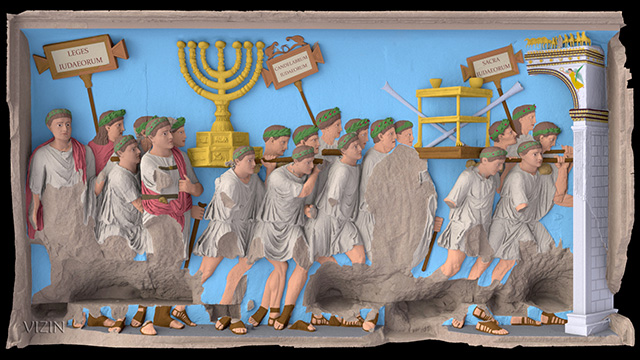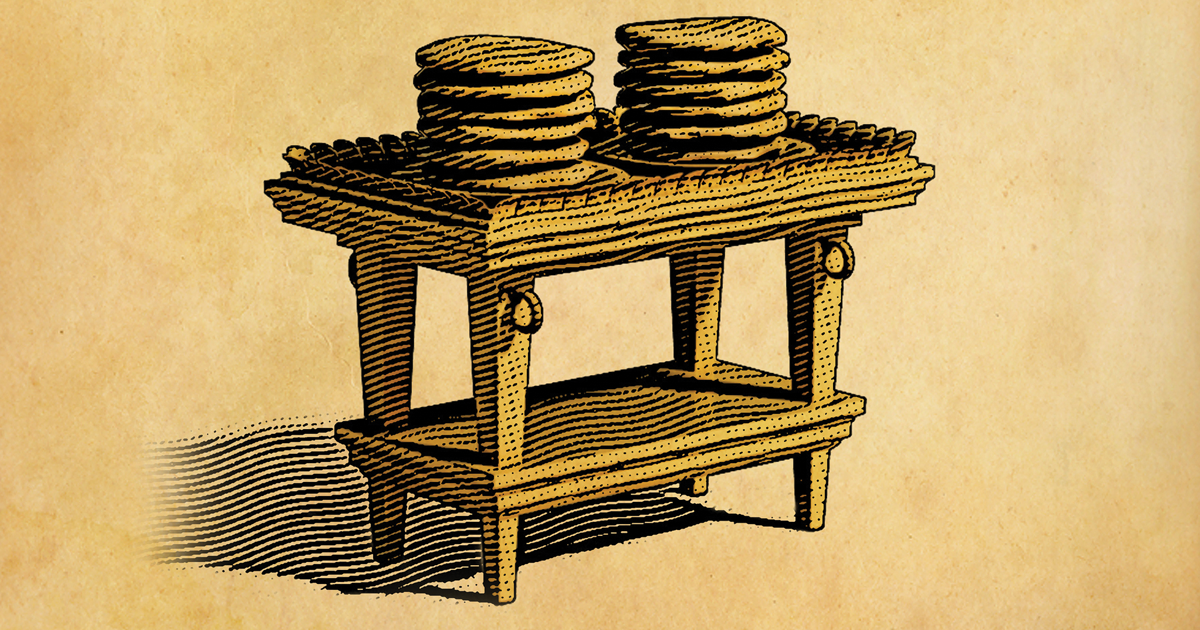
The 265-pound gold menorah was brought to Israel in time for the country’s 71st Independence Day.

Like the menorah depicted in the Arch of Titus, the replica was made with several of the branches broken. Though the original Menorah taken by the Romans has yet to be found, in 2019, a small group of German Christians commissioned a full-sized replica cast in metal and had it coated in gold. On the somber day of Tisha B’Av in 2020, Dror Eydar, Israel’s ambassador to Italy, made an impassioned presentation at the Arch to Titus. Yet for some, the arch remains as a symbol of the destruction of the Jewish Temple. This was made public at a Hanukkah event in 1997. The establishment of the modern state of Israel helped assuage this pain and the ban lifted in 1948. At an unknown date, a local ban on Jews walking under the arch was placed on the monument by Rome’s Chief Rabbinate. The arch stands as a symbol of one of the greatest national tragedies in Jewish history and, for a long time, Jews avoided the arch. He claimed in his journal that the Jews of Rome knew that the Temple vessels depicted on the Arch of Titus were hidden in a cave in the Vatican. In the second half of the 12th century, a Spanish Jew known as Benjamin of Tudela made a tour of the known world, traveling as far east as Mesopotamia. But there are no historical accounts from this time relating the event. Historians conjecture that the artifact was taken by the Vandals who sacked Rome in 455, after which it was melted down and the gold dispersed. The historic trail of the Menorah seems to have been lost during the 5th century. Josephus reported that the Temple artifacts, including the Menorah, were indeed taken to Rome and placed in Vespasian ’s Temple of Peace, completed in 75 CE. Josephus noted that the spoils from the Temple, including the gold Table, the gold Menorah, and the Torah scrolls, were the centerpiece of the Roman celebration.

The event depicted on the arch was witnessed by Josephus Flavius, a Jewish historian of priestly descent captured by the Romans. These images were likely originally colored gold, with the background in blue. Other sacred objects being carried in the triumphal procession are the gold trumpets, the firepans for removing the ashes from the altar, and the Table of Showbread. The golden candelabrum, or Menorah, is the main focus, and is carved in deep relief. The south inner panel depicts the spoils taken from the Temple in Jerusalem.

The arch is huge, measuring 50 feet in height, 44 feet in width, and 15.5 feet in depth. Being one of the few remaining depictions of the Temple Menorah, the image on the Arch of Titus was used as the model for the emblem of the state of Israel. The arch contains panels depicting the triumphal procession celebrated in 71 CE after the Roman victory culminating in the fall of Jerusalem and provides one of the few contemporary depictions of artifacts of the second Temple. Another arch dedicated to Titus, triumphal in its nature, was located in the valley of the Circus Maximus-but this arch only survives in the form of scattered sculptural fragments and a Medieval transcription of its dedicatory inscription. Recent archaeological excavations (2015) in the Circus Maximus have revealed previously unknown remains of this "lost" arch, including elements of its foundations.The Arch of Titus, constructed in 81 CE by Emperor Domitian to commemorate the victory over the Jewish rebellion in Judaea, stands on the Via Sacra in Rome to this day, bearing witness to the fact that the Romans carried away the golden Menorah from the Second Temple in Jerusalem. This arch, built as an honorific monument, honored Titus posthumously and was a project executed by his younger brother and imperial successor, Domitian (emperor, 81-96 C.E.). Many triumphal parades had passed along this route for many centuries, thus the choice to place a permanent triumphal monument astride the route was not accidental but, rather, deliberately evocative of the fact that the triumph as a ritual both created and reinforced collective memory for Romans. Furthemore, the Arch of Titus commands a key point along the triumphal route ( via Triumphalis)-one that visually links the valley of the Flavian amphitheater (known to us as the Colosseum) to the valley of the Forum Romanum and the Capitoline Hill beyond.

The Arch of Titus is located in Summa Sacra Via, the highest point of the Sacra Via, Rome's "Sacred Way" that served as its main processional street.


 0 kommentar(er)
0 kommentar(er)
